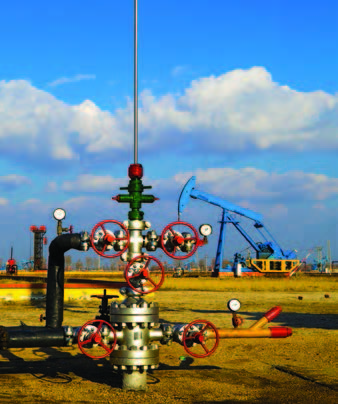Inspired by the oil and gas industry’s need for a method to predict tubing corrosion within the harsh production conditions found below wellheads, researchers with Ohio University (Athens, Ohio) built a computer model capable of doing that and then some. To predict tubing corrosion, the computer model uses Microsoft Excel† along with parameters such as pH, velocities, and iron-based precipitates along production tubing (the tube that oil and gas travel through).
 "This model works by taking commonly measured field parameters—gas, water, oil production rates, gas and water compositions—as inputs and then calculates the corrosion rate at various depths along the tubing," explains Kyle Addis, who completed his master’s degree in chemical and biomolecular engineering at Ohio University. This work is significant because it increases the accuracy of corrosion prediction in oil and gas production environments and will enable oil and gas producers to foresee if or when their tubing needs to be replaced. "They could potentially use it to help develop a corrosion mitigation strategy, that is, which wells need chemicals added to reduce corrosion and which ones don't. This will allow them to save both time and money, because they are less likely to have a leak and won't be replacing tubing that’s still usable,” he says.
"This model works by taking commonly measured field parameters—gas, water, oil production rates, gas and water compositions—as inputs and then calculates the corrosion rate at various depths along the tubing," explains Kyle Addis, who completed his master’s degree in chemical and biomolecular engineering at Ohio University. This work is significant because it increases the accuracy of corrosion prediction in oil and gas production environments and will enable oil and gas producers to foresee if or when their tubing needs to be replaced. "They could potentially use it to help develop a corrosion mitigation strategy, that is, which wells need chemicals added to reduce corrosion and which ones don't. This will allow them to save both time and money, because they are less likely to have a leak and won't be replacing tubing that’s still usable,” he says.
To learn more, read the CORROSION paper, “A Corrosion Model for Oil and Gas Mild Steel Production Tubing,” by K. Addis, M. Singer, and S. Nešic at dx.doi.org/10.5006/1423. This paper can be downloaded from the NACE International Web site at nace.org/store.
†Trade name.